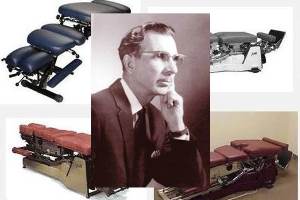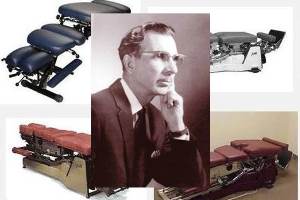statFor some women, it's about making an elegantement at special events or being a couple…

Close-Up on the Thompson Technique: How Does It Differ from Other Approaches to Chiropractic Care?
 The basic chiropractic approach, originally developed by Dr. D.D. Palmer in 1895, is based on the premise that the body has the ability to heal itself if abnormalities of the spine (called subluxations) are found and corrected. Today there are many adjustment techniques used by chiropractors to align segments of the spine and other areas of the body. They are known by names such as Gonstead, Diversified, SOT (Sacro-Occipital Technique), Toggle Recoil, and Logan.
The basic chiropractic approach, originally developed by Dr. D.D. Palmer in 1895, is based on the premise that the body has the ability to heal itself if abnormalities of the spine (called subluxations) are found and corrected. Today there are many adjustment techniques used by chiropractors to align segments of the spine and other areas of the body. They are known by names such as Gonstead, Diversified, SOT (Sacro-Occipital Technique), Toggle Recoil, and Logan.
One of the most popular of these methods of spinal manipulation is the Thompson Technique, first introduced by Dr. J. Clay Thompson and patented in 1955. The Thompson Technique utilizes a specially-designed “segmental drop table” that iaugments the force being imparted to the joint or segment being adjusted. This special table takes advantage of the natural design of spinal joints to help move misaligned segments in a direction that will most improve the motion of that segment in relation to the segment above and below the one being adjusted.
What Makes the Thompson Technique Unique?
One unique feature of the Thompson Technique is the approach used to determine a disparity in the length of the legs when a patient is lying prone on the table. The patient’s feet (wearing shoes because they help to calibrate the measurements) are flexed to detect neurological imbalances that give the appearance that one leg is longer than the other. This helps the chiropractor to determine the exact nature of the adjustment that needs to be performed.
For the adjustment itself, the patient reclines on the specialized table, which is set to his or her weight. With the patient’s head supported, the chiropractor applies a high speed thrust, using minimal force. The pneumatically-driven table then “drops” slightly to lower the section corresponding to the spinal region being adjusted. This facilitates the adjustment and carries the joint through its normal range of motion, allowing full correction of the segment while applying less torque and force than would be needed without the special drop-table.
Benefits of the Thompson Technique
The primary benefits of the Thompson Technique are improved posture, strength, flexibility, and performance as well as greater resistance to injury in the adjusted area. Patients also report improved ability to sleep and relax, reduced aches and pains and increased tolerance to stress. It is not unusual for patients to experience complete relief from their symptoms after only a few sessions.
If you are interested in learning more about the Thompson Technique, we invite you to call or visit our office. We’ll be happy to explain our approach to chiropractic care in detail and help you decide what type of treatment may be best for you.




